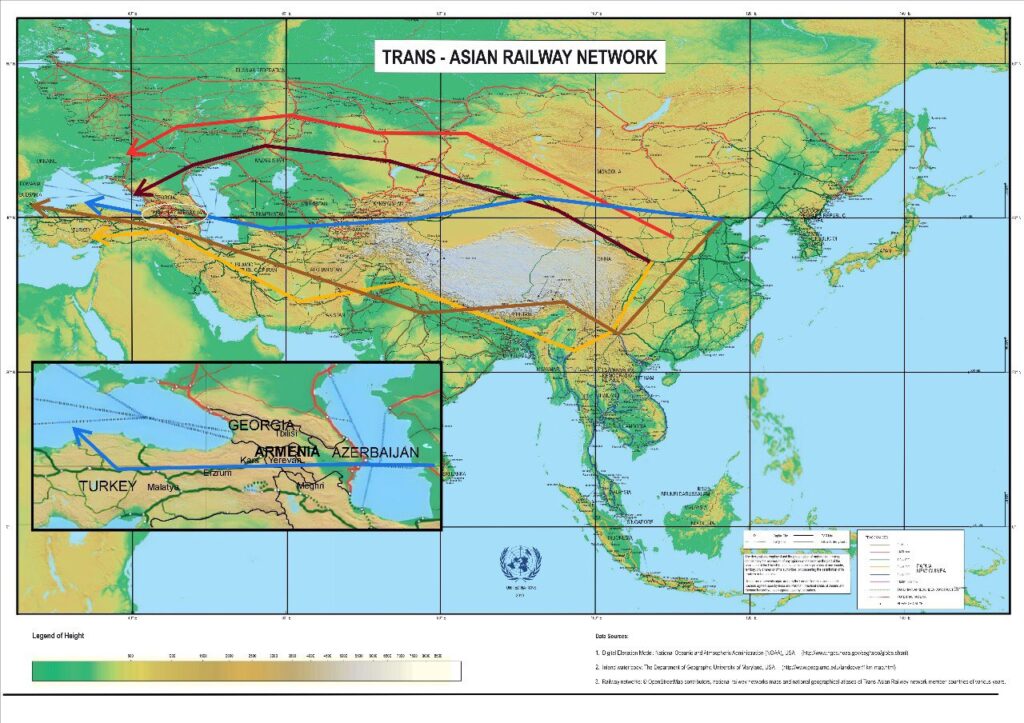
Taken from Red Lantern ANALYTICA
China, India, and other economies in Asia have an opportunity to diversify their overland trade routes to Europe by establishing an alternative and more cost-effective route through Armenia. At the same time, Armenia has an opportunity to be reintegrated into the historic trade routes between Asia and Europe as an independent sovereign state. Such coincidence of economic and geopolitical interests is rare. The opportunity should not be missed.
A useful way of looking at the world at any given period is to identify what is the main geopolitical game at play, and what are the side-shows that inevitably get affected by it. In advising client governments in the Middle East, Europe, Asia, and North America, some of which liked to see themselves as actors of consequence, this approach was helpful in both bringing them back to reality and guiding them into a more realistic and advantageous geo-strategic direction, as they positioned themselves in the crosscurrents of the ever changing “main game.”
The “main game” has changed considerably in the past few decades. During the cold war, it was primarily between the Soviet Union and the USA. After the collapse of the USSR, it turned into a Russia-USA axis. Today, it is shifting increasingly into a USA-China competitive tension. What is interesting about this last shift is that the China-US global competition is materially different from those preceding it, in the sense that it does not involve geopolitical or ideological dominance, as was the case during the cold war and even in the case of the Russia-US relations. China has two strategic objectives — 1) safeguarding its security perimeter and territorial integrity and 2) spreading its economic and commercial “dominance” globally. In Central Asia and Caucuses the two come together, because China considers these regions its near abroad.
The competition for global economic dominance involves control over strategic trade routes. The US navy still pretty much dominates global sea routes. So China’s focus has been to have a major influence on global land routes. That is basically the main objective of its “Belt and Road” initiative, in which it has been investing substantial resources.
Land trade routes have attracted the attention of other players as well.
—Erdogan’s main opponent at the last elections in Turkey, Kilicdaroglu, was promoting a map describing a route from China to Europe, via Turkey and Iran, totally bypassing not only the south Caucasus but also Azerbaijan. Official Azerbaijan’s reaction to that was apoplectic. It criticized plan strongly and claimed that Azerbaijan would be at the center of any Asia-Europe trade route.
—More recently, around the G20 Summit, the plan for a India-Middle East-Europe Economic Corridor (IMEC) was announced. This was quite elaborate, with various segments having sea transportation and other segments land. What is interesting about this is that it links India to Europe, bypassing Turkey altogether. This time, Turkey went apoplectic, with Erdogan announcing that an Asia-Europe trade corridor cannot exist without Turkey. China has reason to be concerned about IMEC as well, as it is seen as a potential rival to China’s new silk road.
Turning back the to the “main game” of US-Chinese competition, China is faced with the need to diversify its land route options. Aside from competitive initiatives such as IMEC, all existing land trade routes available to China are subject to geopolitical risks, making multiple alternative options attractive, even if the new options are also subject to the same geopolitical risks.
The need for such alternatives became more apparent after the Ukraine war, when the Russian transport routes into Europe were disrupted because of the sanctions. The region poses other risks as well: Georgia, which also underwent a war with Russia, and Iran, against which formidable forces are at work, including Israel and the US, are risky transportation hubs. There is no non-risky land route, especially when one thinks as long-term as the Chinese do. So diversification of options makes sense.
The one option that gives China an economically more efficient alternative is a straight line through the southern Caucasus, which puts Armenia back on the trade route map. The most efficient land trade route from China to Europe passes through the southern Caucasus.
Here is where the control of the famous “Zangezur Corridor” attains global significance and becomes relevant to the “main game.” Furthermore, it presents a unique geopolitical opportunity for Armenia because the interests of China, the US, India, Iran are aligned on this issue.
Here is why:
The control of a land trade route linking Asia with Europe through the southern Caucasus and Armenia can take one of three forms:
—It can be through a free “Corridor” through Armenia, linking Azerbaijan to Nakhijevan and thus Turkey. This is what Azerbaijan and Turkey call the “Zangezur Corridor” and which they have been actively campaigning for since the end of the 2020 44-day Nagorno Karabakh war, and, most recently during Turkish President Erdogan’s speech at the UN. Obviously, this will give Turkey enormous new leverage and have it realize its long-standing dream of a pan-Turkic zone of influence extending all the way to China. China would be opposed to that level of Turkish dominance in its near abroad. India would be opposed to it for the same reasons. The US would also be opposed to this because it will turn Turkey into an even more “difficult ally” than it is now. Iran is opposed to it for the obvious reason that it eliminates the only border linking it to the west outside of Turkish control. Finally, Armenia would be opposed to this because it would constitute a direct infringement of its sovereignty.
—The second option is to have the Zangezur corridor under Russian supervision. This is what Russia wants, and that is why it is opposed to the first option above. But this option is unacceptable to all other players.
—Finally, the 3rd option is to have the route cross Armenia under full Armenian sovereignty. Armenia being the least threatening and smallest country in this entire link, this would be the preferred option of most major powers, including adversaries and competitors like the US, China, India and Iran.
The authorities in Armenia should take full advantage of this historic opportunity.
- Although it is now a moot point, it should be noted that Azerbaijan’s claims of equivalence between the Zangezur and Lachin corridors have no validity. It unilaterally and illegally closed the Lachin corridor almost ten months ago, and, after its last equally illegal military offensive against Artsakh and the consequent depopulation of the enclave from its indigenous population, the opening of the Lachin corridor has been rendered irrelevant, at least for the time being. Nevertheless, and for the record, it is worth noting that the Lachin and Zangezur corridors are not equivalent neither legally nor historically. The Lachin corridor not only has historical precedent but is specifically mentioned in the Nov 9 agreement to which Azerbaijan is a signatory, and there is an ICJ ruling for its opening, as well as multiple high-level diplomatic demands that it be opened. There are no such circumstances surrounding a passage through the Syunik region of Armenia (Zangezur). Furthermore, Artsakh is an enclave, whereas Nakhijevan is an exclave. Artsakh is fully surrounded by Azerbaijan and isolated from the world. Nakhijevan is not. It can reach Azerbaijan through Iran—and that route is already open and functioning. In short, Nakhijevan cannot be suffocated like Artsakh. Azerbaijan’s past claims that it can supply Karabakh through Aghdam—also now rendered irrelevant since the region has been forcefully depopulated—did not go far, as both American and European statements rejected it as an alternative to opening the Lachin corridor.
Vahan Zanoyan is a global energy and security specialist. Over a span of thirty-five years, he has advised numerous governments on economic development policy, energy sector strategy, national security, and global competitiveness. He has also served as a consultant to numerous international and national oil companies, banks, and other public and private organizations. Mr. Zanoyan supports several initiatives of the Network State.

